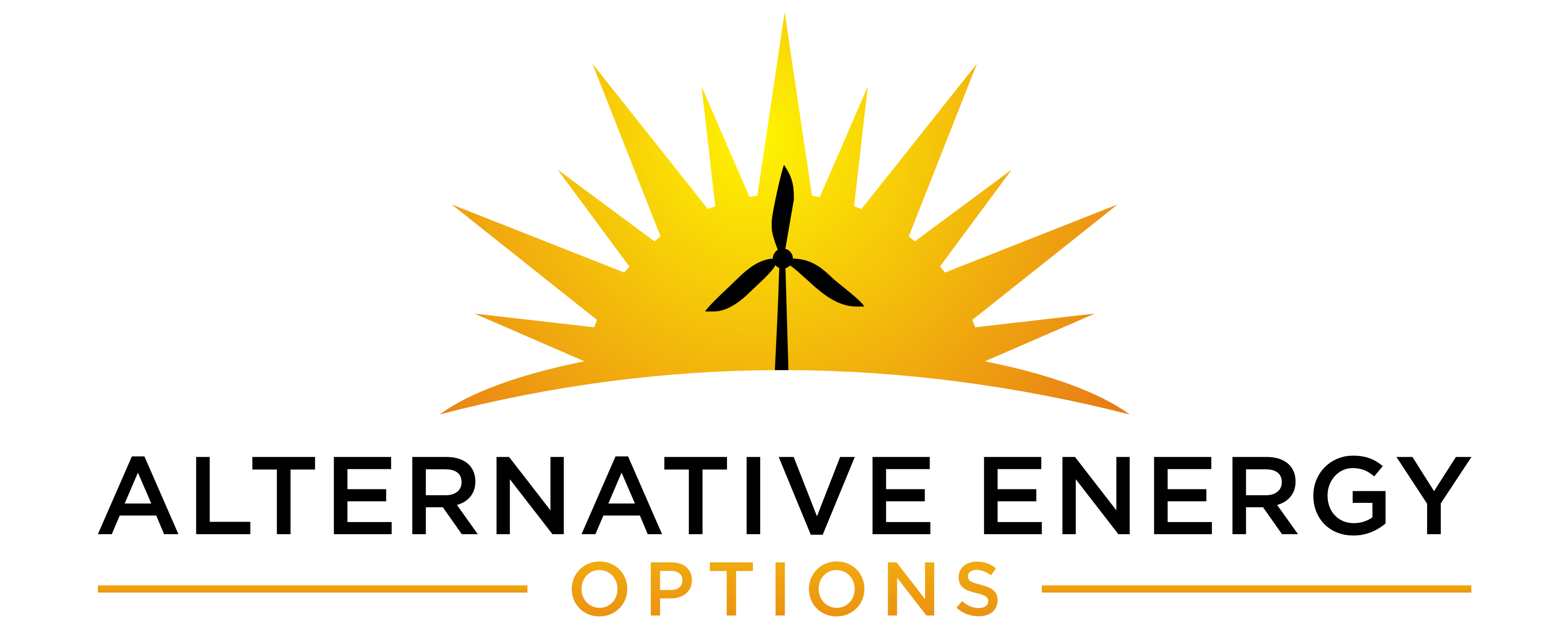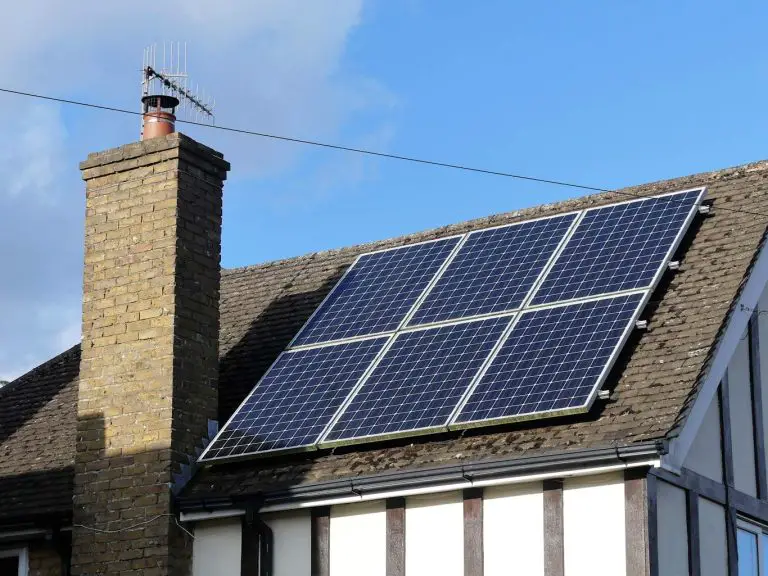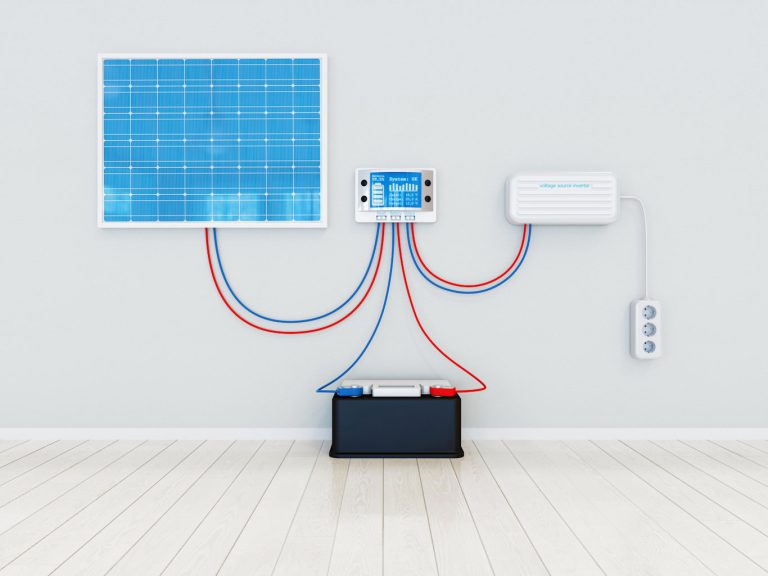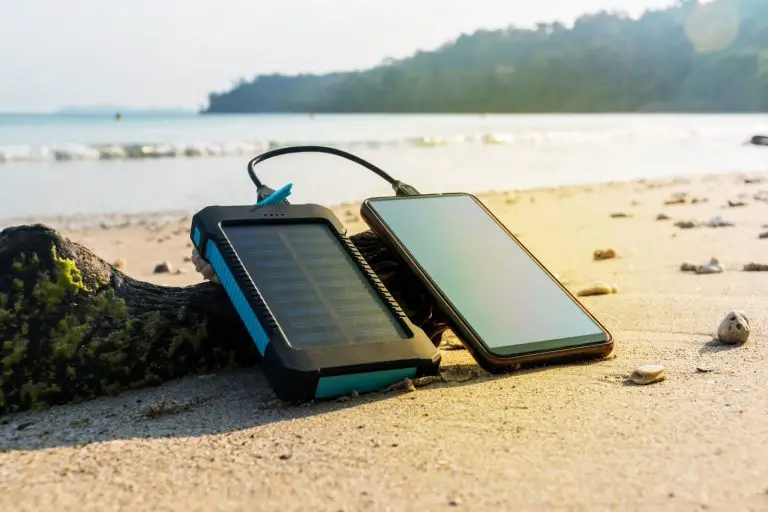Do Solar Lights Charge On Cloudy Days? (Find Out Here)
Solar lights generate power by exposure to sunlight. During the day, solar lights still charge even in cloudy weather, but efficiency varies depending on cloud density. Nevertheless, solar lights are still reliable under such conditions.
Solar lights are now widely used as outdoor lights for various purposes, such as street lights, garden lights, tree lights, and many more. Solar lights allow access to a renewable energy source and energy cost savings. However, sunlight exposure is a necessity for solar lights, and can they function on cloudy days?
Read more about how solar lights work and function during shaded weather conditions.
How Do Solar Lights Charge?
Solar lights consist of solar panels that enable solar energy to generate power. The generated power is then stored in a rechargeable battery which typically comes as a set with solar panels and lights. The set also has an intelligent controller that prevents the battery from overcharging.
The smart controller is responsible for switching solar lights on and off or charging. Specifically, the controller can detect when there is available sunlight for charging during the day. As day turns to night, it automatically turns on the solar lights and vice versa.
The rechargeable batteries store energy daily when there is available sunlight through the controller’s guidance. As night arrives, batteries release the stored energy to emit light.
Does It Have To Be Sunny To Charge Solar Lights?
You can charge solar lights during cloudy, rainy, or snowy weather conditions. However, the charging efficiency would vary based on the available sunlight. For example, the solar panels’ energy production during very thick cloudy weather can range from 10% to 50% less than normal production during sunny weather.
Sunlight is prevalent during a cloudy day, so solar lights can still charge. However, the charging capability of solar light varies according to the type of cloud patterns evident during the day.
Cloud Patterns That Could NOT Hinder Solar Charging
Here are the following types of cloud patterns that could not hinder the charging efficiency of solar lights:
- Cumulus: clouds having flat bases or known as cotton-like or puffy in appearance.
- Cirrocumulus: appear as patchy white sheets of clouds.
- Cirrostratus: a very thin, high-altitude cloud often forming halos under direct sunlight.
- Cirrus: clouds having thin and wispy strands in appearance.
Interestingly, with the types of cloud patterns mentioned above, the energy production of solar panels can be better than normal. Solar panels can absorb direct sunlight and also reflect sunlight from the clouds.
Consequently, energy yield can be as high as 50% more than normal production during a sunny day with clear skies.
Cloud Patterns That Could Hinder Solar Charging
On the other hand, here are the cloud patterns that can hinder the charging capability of solar lights:
- Nimbostratus: dark, heavy, and dense-looking clouds and often come with moderate or heavy rainfall.
- Altostratus: usually gray, widespread, or blanket-like in appearance.
- Stratocumulus: is characterized by dark and large round shapes in patches or waves that tend to come before a storm.
Dense cloud cover can result in a lack of power to generate electricity for the required time. Specifically, solar light can still store energy during a dense cloud cover day and automatically switch on at night. However, the duration of luminous light would be short relative to a normal sunny day.
Solar Lights During Rain
Solar lights can and cannot function during rainy weather since not all solar light units are fully water-proof. Hence, you can buy solar lights that will survive rainy weather conditions.
Like dense cloud cover weather, solar lights can still store energy during a rainy day but not at full capacity. Nevertheless, rain can still benefit solar lights as it would clean and wash away dust accumulated in the panels, compromising energy production and storage.
Solar Lights During Winter
Sunlight exposure is limited during winter, and solar lights will also not be at total capacity in charging during the day. Additionally, accumulated snow on the panels (i.e., not mounted properly) would not allow electricity generation. You can ensure to mount panels facing the sun and in sloping orientation to shed snow during winter.
Nevertheless, solar lights can still be safely left outside during winter, and the strong winds can aid in blowing accumulated snow into the panels.
Charging Solar Lights For The First Time
Solar lights require a minimum of 8 to 12 hours of sunlight exposure and charging time, especially when used for the first time. Under favorable weather conditions, you can fully charge solar lights after 6 hours of continuous, direct sunlight exposure. A fully charged solar light could last for up to seven nights.
Hacks On Effective Charging Of Solar Lights
There are various ways to ensure effective charging of solar lights, and you can refer to the following sections below.
Cleaning Of Panels
Accumulation of dust, dirt, or snow can happen on solar panels, which can disable the light absorption process to generate electricity. Hence, you can regularly clean panels using a small brush or microfiber cloth.
Orientation Of Panels Toward The Light
Sunlight exposure is limited during shady weather conditions (e.g., winter, dense cloud cover, and rainy season). Therefore, ensure to orient solar lights to favorable spots, maximizing sunlight exposure. Avoid placing solar lights in shaded areas such as trees and right next to tall structures.
Deep Charge The Battery
It is best to leave solar lights charging continuously for 72 hours and avoid using them during this duration. It would ensure battery health and efficiency.
Use Of Mirrors
More light can be exposed to solar panels by setting up mirrors (i.e., larger sizes than existing panels) around them. It would induce a faster charging process.
Battery Types For Solar Lights
There are various types of batteries for solar lights which can suit your preferences. Each type of battery has its pros and cons, summarized in the table below.
| Battery type | Pros | Cons |
| Nickel-cadmium (NiCad) | Do not suffer from significant voltage dropLow-cost purchase | Detrimental to the environment when improperly disposed ofNeed to be discharged completely before recharging |
| Nickel metal hydride (NiMH) | Hold more electric chargeEasier to dispose of without environmental harmAffordable | Do not last longer than other battery types |
| Lithium-ion (Li-ion) | Negligible to voltage dropsFaster charging time than NiMHLast longer than NiMH and NiCadCan survive 1500 charge-discharge cycles | ExpensivePotential overheating and catching fire |
| Lithium phosphate (LiFePO4) | Smaller voltage drops than Li-ionApplicate to the series type of solar panelsCan emit brighter and longer lights than other battery types | Most expensive |
Do Solar Lights Charge At Night?
Solars lights do not charge at night. Even though there is a potential light reflection from the moon at night, there is no sufficient light available to produce electricity. Hence, the photovoltaic effect from the solar panels is not triggered, generating no power.
Hacks In Charging Solar Lights Without Sunlight
There are ways to charge solar lights from exposure to artificial light sources, such as
- Incandescent light: Incandescent bulbs from large flashlights or emergency lights can trigger solar lights to charge. However, charging would consume a lot of time.
- LED light: An LED light can be an alternative to incandescent light and is capable of charging solar-powered products.
- Power source: Several solar-powered products come with a USB charging mechanism. For example, plugging the device into a power bank can initiate charging even in dense cloudy or winter weather.
Alt Energy Options is an Amazon Associate. As an Associate, we earn commissions from qualifying purchases. The site also maintains other affiliate relationships. Purchases made through the site links don’t increase cost to the buyer. Full affiliate statement here.
Types Of Solar Lights To Buy
The type of solar lights to buy would depend on the intent of use and the areas you plan to illuminate (e.g., pathways, doors, gates, streets, etc.). Solar lights can serve as decorations or safety guide lights (i.e., motion guidance). There are also solar lights well suited for gardening.
Here are some examples of different types of solar lights on Amazon:
- Solar deck lights
- Pathway solar lights
- Motion sensor solar lights
- Solar wall lanterns
- Wireless motion sensor solar lights
- Solar garden lights
Solar Lights Suited During Shaded Days
Additionally, there are several types of solar lights best suited for shaded areas or unfavorable weather conditions wherein exposure is limited to indirect sunlight. Examples available on Amazon include:
- Kvensin solar lights
- Aootek solar lights
- Hmcity solar lights
- Esgarden solar lights
- Leclstar solar lights
Advantages Of Solar Lights
Solar lights are an excellent way for a community, and even an individual, to conserve and efficiently use energy. Excellent and reliable solar lights provide long-term carbon-free footprint lighting for houses, streets, parks, gardens, and offices.
Solar lights are an excellent alternative for developing countries that rely heavily on energy processing plants (e.g., coal power plants) to generate light electricity.
Additionally, solar lights can promote public safety through street illumination and the reduction of road accidents. Solar lighting may induce energy independence for developing countries such as this.
Lesser Expense
Solar light installation for public infrastructures (e.g., street lights) is low cost relative to trenching grid power. Furthermore, installation is safe due to low voltage exposure from solar units, and wiring is often located at the top portion of the poles.
The most convincing reason why numerous people shift to solar-powered products is their ability to reduce energy bills significantly. However, the purchasing and installation costs tend to be expensive. Nevertheless, the expense saved is relatively large when there are no more regular electric bills to address.
Disadvantages Of Solar Lights
On the other hand, solar light components can negatively impact the environment if not correctly handled. For example, batteries will eventually become waste which consists of hazardous properties you must manage to avoid environmental pollution.
Specifically, solar light batteries contain sulfuric acid, lead, lithium, and plastics. Additionally, solar panels are composed of aluminum, tin, silicon, cadmium, copper, and lead. If improperly disposed of, these materials can contaminate the air, soil, and water, damaging living organisms.
Summary
Solar lights have diverse uses, especially in the outdoor setting. These lights best function when exposed to continuous sunlight, thereby efficiently storing solar energy into batteries.
Solar lights can also charge energy during cloudy days and rainy and snowy weather conditions. Interestingly, energy production can be higher with few cloud cover due to simultaneous energy absorption from direct sunlight and reflected sunlight from the clouds. Still, unfavorable weather conditions tend to lower the charging efficiency of solar lights.
To ensure charging efficiency and maximization of solar lights, panels should be regularly cleaned and adequately oriented during installation. Further, deep battery charging and mirrors can also aid in effectively charging solar lights.
Solar lights have their respective pros and cons. However, the disadvantages of using solar lights can be compensated by proper waste management and handling of solar light components.







